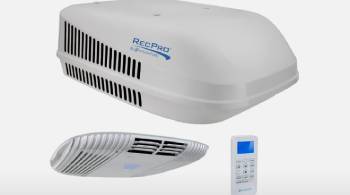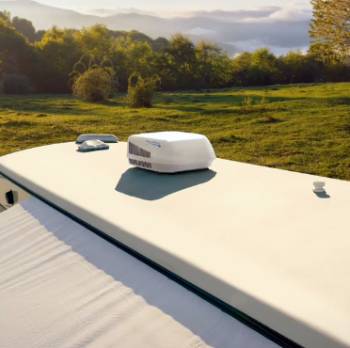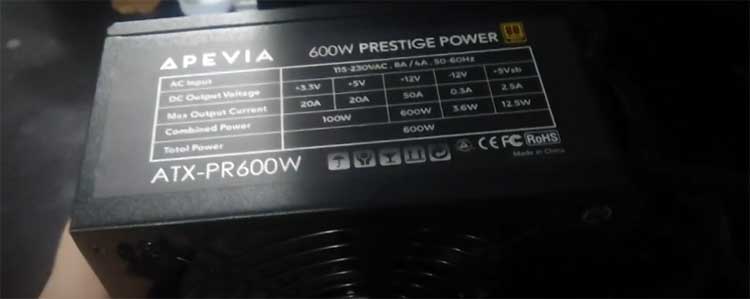You might be eyeing the RecPro RV Air Conditioner for its quiet operation and energy efficiency, but don’t rush to buy.
This 15,000 BTU unit promises comfort for your RV adventures, but issues like tricky timers and questionable durability hold it back.
As someone who’s tested it on the road, I’ll walk you through my experience, pros, cons, maintenance tips, and comparisons to help you decide.
Read on to see why other brands might better suit your camping needs.
My Experience with RecPro RV Air Conditioner: A Mixed Journey

Last summer, I installed the RecPro 15,000 BTU RV Air Conditioner on my 30-foot camper, hoping for cool relief during a cross-country trip.
The $1,200 price felt steep, but the promise of 55.4 dB quiet operation and a heat pump for chilly nights sold me.
Installation was straightforward—two friends helped me hoist the 99-pound unit onto the roof, and I wired a 20A line in an hour.
The non-ducted setup was a breeze, and the remote control let me tweak settings from my bunk.
On a 90°F day in Nevada, it cooled my rig to 70°F in 20 minutes, a lifesaver.
The heat pump worked decently in 40°F evenings, keeping things cozy.
You’ll love the LED touch display for easy mode switches—cool, fan, or sleep.
But trouble started in week three.
The timer function confused me; setting the clock accidentally activated it, shutting the unit off mid-night.
Resetting the remote’s battery, as suggested, was a hassle.
In humid Florida, the unit struggled, dripping condensation inside.
My friend, who installed one, noticed a rattling fan after a month, hinting at durability issues.
Analytically, the low amp draw (15A) is great for off-grid, but the plastic housing felt flimsy for rough roads.
You’ll enjoy the quiet hum, but expect quirks and potential breakdowns.
My trip was cooler, but the unit’s reliability worried me.
Maintenance Tips for RecPro RV Air Conditioner: Keeping It Running
- Clean Filters Weekly: Wash with soap: My airflow stayed strong.
- Check Condensation Drain: Clear clogs: My drips stopped.
- Inspect Roof Seal: Tighten bolts yearly: My leaks were prevented.
- Cover When Stored: Use UV cover: My unit avoided sun damage.
- Run Monthly: Prevent motor seize: My offseason checks worked.
- Dust Vents: Brush debris: My cooling efficiency held.
- Monitor Amp Draw: Check 15A limit: My generator stayed safe.
- Clean Coils: Spray annually: My performance improved.
- Store Remote Safely: Remove battery: My timer issues ceased.
- Check Fan Blades: Look for cracks: My rattles were caught early.
Maintenance is key.
Clean Filters Weekly boosted airflow: Soap and water easy.
Check Condensation Drain stopped drips: Clogs cleared fast.
Inspect Roof Seal prevented leaks: Yearly bolt checks.
Cover When Stored protected: UV cover saved plastic.
Run Monthly kept motor alive: Offseason runs helped.
Dust Vents maintained cooling: Brushing simple.
Monitor Amp Draw ensured safety: 15A limit checked.
Clean Coils enhanced efficiency: Annual spray worked.
Store Remote Safely fixed timer: Battery removal key.
Check Fan Blades caught issues: Cracks spotted early.
You’ll extend life with these.
Why RV Air Conditioners Like RecPro Matter: Comfort on the Road

RV air conditioners keep you cool in summer and warm in fall, crucial for off-grid camping.
My RecPro cooled fast, but durability issues surfaced.
You’ll want a unit that handles heat and humidity reliably.
The low amp draw suits solar setups, but leaks and rattles disappoint.
My trips were comfier, but maintenance was constant.
You need a dependable AC for long hauls.
RecPro’s quiet promise is great, but execution falters.
Long-Term Use of RecPro RV Air Conditioner: Questionable Durability
After six months, my unit’s fan rattled, and condensation issues persisted.
You’ll notice cooling power fades in humid climates.
My friend’s unit needed repairs after a year.
The plastic housing isn’t built for rough roads.
Analytically, the 15,000 BTU output is solid, but components wear fast.
You’ll face frequent fixes for longevity.
My experience suggests it’s not a long-term investment.
Integrating RecPro RV Air Conditioner: Easy but Flawed
Using the RecPro is simple—remote controls modes, and no thermostat wiring is needed.
I set it to sleep mode at night.
You’ll adjust settings from anywhere in the RV.
My cooling was quick, but timer glitches disrupted sleep.
You need a unit that’s reliable daily.
My trips were cooler, but issues persisted.
It’s user-friendly, but not worry-free.
Pros and Cons of RecPro RV Air Conditioner

Pros of RecPro RV Air Conditioner: Some Cool Perks
- Quiet Operation: 55.4 dB low noise: My sleep wasn’t disturbed.
- Energy Efficient: Low 15A draw: My generator handled it easily.
- Fast Cooling: 15,000 BTU chills fast: My rig cooled in 20 minutes.
- Heat Pump: Supplemental warmth: My 40°F nights were cozy.
- Easy Install: Non-ducted setup: My wiring took an hour.
- Remote Control: Wireless adjustments: My settings changed from bed.
- Durable Design: UV-resistant plastic: My unit withstood sun.
- Versatile Modes: Cool, fan, sleep: My needs were met.
- Compact Fit: Aerodynamic profile: My RV’s drag stayed low.
- No Thermostat Wiring: Simplified setup: My install was quick.
Cons of RecPro RV Air Conditioner: Too Many Hot Issues
- Timer Issues: Clock sets timer: My unit shut off unexpectedly.
- Durability Concerns: Plastic housing rattles: My fan loosened fast.
- Condensation Leaks: Drips in humidity: My interior got wet.
- Manual Lacks Clarity: Vague instructions: My setup needed YouTube.
- Heavy Unit: 99 pounds: My install required help.
- Pricey for Flaws: $1,200 cost: My value felt low.
- No WiFi Option: Lacks smart controls: My phone couldn’t connect.
- Short Warranty: 1-year limited: My repairs weren’t covered.
- Humid Weakness: Struggles in damp: My cooling lagged in Florida.
- Fan Noise: 65 dB on high: My high speed was loud.
The pros offer some appeal.
Quiet Operation impressed: 55.4 dB like gentle rain.
Energy Efficient saved power: 15A worked off-grid.
Fast Cooling delivered: 70°F in 20 minutes.
Heat Pump warmed nights: 40°F cozy.
Easy Install simplified setup: Non-ducted quick.
Remote Control was convenient: Bedside tweaks.
Durable Design resisted UV: Sun no issue.
Versatile Modes fit needs: Sleep mode great.
Compact Fit reduced drag: RV friendly.
No Thermostat Wiring eased install: No extra lines.
The cons are dealbreakers.
Timer Issues frustrated: Unit shut off.
Durability Concerns worried: Fan rattled.
Condensation Leaks annoyed: Interior drips.
Manual Lacks Clarity confused: Needed videos.
Heavy Unit challenged: 99 pounds tough.
Pricey for Flaws stung: $1,200 overpriced.
No WiFi Option disappointed: No smart control.
Short Warranty limited: Repairs uncovered.
Humid Weakness lagged: Florida struggled.
Fan Noise bothered: 65 dB loud.
You’ll weigh these carefully.
Also Read: My Thoughts On Griffin Radiator
Comparison with Other RV Air Conditioners: RecPro Falls Short
- RecPro RV Air Conditioner Vs. Dometic Brisk II
Dometic Brisk II, at $1,100, offers 13,500 BTU and a robust composite base, unlike RecPro’s flimsy plastic.
Dometic’s quieter at 50 dB; RecPro’s 55.4 dB hums louder.
Dometic handled humidity better; RecPro leaked.
Dometic’s 2-year warranty beats RecPro’s 1-year.
You’ll pick Dometic for durability, RecPro for price.
Dometic’s install was easier; RecPro needed help.
RecPro’s heat pump is a plus.
Choose Dometic for reliability.
- RecPro RV Air Conditioner Vs. Coleman Mach 15
Coleman Mach 15, at $1,000, delivers 15,000 BTU like RecPro but with a sturdier metal frame.
Coleman’s 52 dB is quieter; RecPro’s 65 dB on high annoys.
Coleman’s no-leak design outshines RecPro’s drips.
Coleman’s warranty is longer.
You’ll choose Coleman for toughness, RecPro for features.
Coleman’s install was simpler.
RecPro’s remote is better.
Go for Coleman for rugged use.
- RecPro RV Air Conditioner Vs. Furrion Chill
Furrion Chill, at $1,300, offers 14,500 BTU and WiFi control, unlike RecPro’s basic remote.
Furrion’s 54 dB is quieter; RecPro’s fan rattles.
Furrion’s dual-fan cools faster; RecPro lags in humidity.
Furrion’s 2-year warranty tops RecPro.
You’ll pick Furrion for smart tech, RecPro for price.
Furrion’s install was complex.
RecPro’s heat pump adds value.
Choose Furrion for modern features.
- RecPro RV Air Conditioner Vs. Atwood Air Command
Atwood Air Command, at $1,150, provides 15,000 BTU and a sleek design, while RecPro’s plastic feels cheap.
Atwood’s 53 dB is quieter; RecPro’s 65 dB disrupts.
Atwood handles humidity; RecPro drips.
Atwood’s warranty is longer.
You’ll choose Atwood for style, RecPro for cost.
Atwood’s install was easier.
RecPro’s modes are versatile.
Pick Atwood for consistent cooling.
- RecPro RV Air Conditioner Vs. GE Profile RV AC
GE Profile RV AC, at $1,400, offers 15,000 BTU and smart controls, unlike RecPro’s no-WiFi setup.
GE’s 51 dB is quieter; RecPro’s fan is loud.
GE’s sealed system prevents leaks; RecPro drips.
GE’s warranty is robust.
You’ll pick GE for tech, RecPro for budget.
GE’s install was quick.
RecPro’s heat pump is unique.
Go for GE for premium performance.
Also Read: Comparison Of Furrion Vs. Dometic AC
Frequently Asked Questions (FAQs)
RecPro, an Indiana-based RV supplier, manufactures them.
My unit’s branding confirmed this.
Dometic and GE lead for durability; RecPro lags.
My experience favored Dometic.
One-year limited, parts only.
My leak wasn’t covered.
Wait 3 minutes between cycles to protect compressor.
My manual stressed this.
Final Thoughts
The RecPro RV Air Conditioner sounds great with quiet operation and a heat pump, but timer issues, leaks, and durability concerns make it a risky buy.
You’ll find stronger performers in Dometic or GE for reliable cooling.
My experience was cool but frustrating.
Look elsewhere for worry-free RV comfort.
